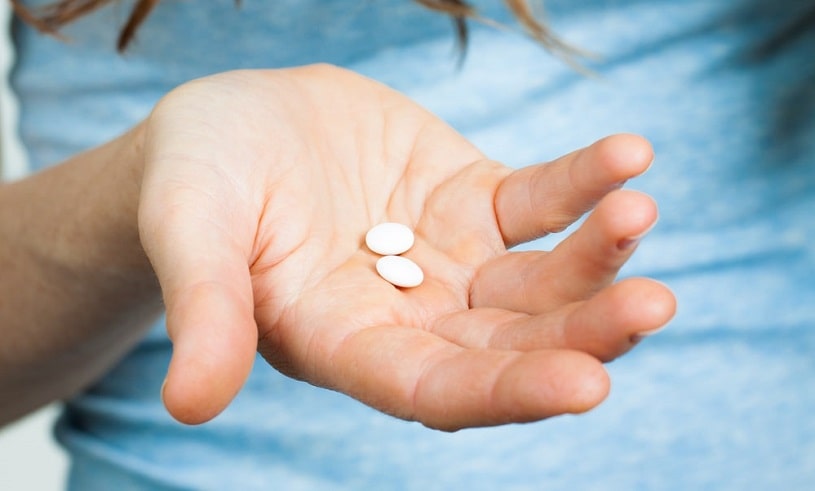Snorting Adderall is one of the most dangerous ways to administer this drug because snorting usually leads to overdose due to the increased intensity of its effects and this, in turn, causes dangerous side effects. The effects may range from mild symptoms such as restlessness and blurred vision to loss of consciousness and death in severe cases. Find out why Adderall snorting is so harmful, how to spot an overdose, and where to find treatment?
Table Of Contents:
What Are the Dangers of Snorting Adderall?
Snorting is a prohibited way of administering drugs. The powdered form of this substance is inhaled through the nasal system. After that, the stimulant diffuses through the nasal membrane to the bloodstream through the surrounding blood vessels. It shortens the path the stimulant travels to get to the bloodstream and, ultimately, the brain, thus causing stronger and sudden Adderall adverse effects.
Snorting Adderall is extremely risky and poses a high potential for abuse. Snorting is not a medically approved way of administering drugs and leads to severe health hazards.
The practice of snorting is highly discouraged. Sniffing this stimulant leads to abuse, and much like any other drug, has its own set of side effects. Some of the recorded ones include paranoia, nausea, insomnia, sexual dysfunction, loss of appetite, convulsions, and irregular heartbeat. That aside, it is important to know what happens if one snorts it.
What snorting does is that it introduces into the bloodstream a large dose of this stimulant. This practice can be devastating to health and hence not recommended.
Some of the Dangers of Inhaling This Stimulant Are:
- Respiratory issues such as a chronic runny nose, inflammation, and respiratory infections
- Nasal damage which may necessitate surgery to correct and rebuild the passages.
- Nosebleeds
- Cardiac complications, such as heart attack, heart palpitations, and arrhythmia.
- Malnutrition and weight loss
- Suicidal thoughts
- Sleeping problems
- Drug dependence, which may lead to accidents or even loss of life due to overdose
- Violent behavior
To add to the risks above, drug users who resort to breathing in substances end up with a distorted self-image. This makes them take even more of this drug as an escape mechanism from shame and fear.
If a patient has a history of bipolar disorder, mental illness, or depression, puffing this stimulant or the Adderall IR variety can be extremely dangerous.
What Are the Signs That Someone is Snorting Adderall?
Snorting is one of the most common causes of a drug overdose.
Dangerous as this may be, people who are into snorting have become dodgy and very creative at hiding their practice. Therefore, the problem often goes on for a long period without being noticed. That notwithstanding, there are tell-tale signs that can help one know someone is huffing this stimulant.
Some of them are:
- Elevated body temperature beyond the norm
- Periodic unconsciousness
- Accelerated heartbeat
- Dilated pupils
- Delirium
- Irregular breathing
- Painful palpitations
- Convulsions
- Emotional and physical crash episodes, especially when the stimulant wears off
- Mental instability
- Unexplained exhaustion
- Constantly running nose
- Regular nosebleeds
- Irritation signs around the nose
- Snorting paraphernalia
The other signs of Adderall snorting include the powder remnants on the person’s hair, clothes, hands, or furniture. Special attention shall be paid to horizontal hard surfaces, including mirrors left on the table or cupboard.
When someone spots a combination of any of these signs, they shall not hesitate to raise the alarm so that the patient can be assisted early enough. In case of sudden, severe symptoms, there are basic first aid procedures to undertake to bring the problem under temporal control.
If one observes Adderall overdose signs, the doctor must be informed immediately.
How Many People Overdose on Adderall?
The 2016 National Study on Drug Use and Health revealed that 28.6 million Americans aged 12 and more had used illicit drugs the month before the study. Furthermore, more than 54 million Americans use prescription drugs for non-medical purposes, and the most abused drugs included painkillers, tranquilizers, stimulants, and sedatives. The study reported that more than 1.7 million Americans use stimulants for non-medical purposes; however, doctors still prescribe it as it is one of the most efficient ADHD treatment medicines.
2013 report published on NCBI shows that the number of people who developed Adderall OD from non-medical use has increased significantly between 2006 and 2011.
Complications from excess non-medical use of amphetamines requiring emergency care visits increased by 156 percent, with friends and family identified as the main source of the drug, according to the research by Lisa L. Weyandt. Young adults between the ages of 18 and 25 constitute the main population who use amphetamines for non-medical use.
Symptoms of excess use may occur through any of the routes of administration, including oral and intranasal.
Factors That May Increase the Chances to Overdose on Adderall
The medication reaches its peak levels 3 hours after ingesting the drug. Adderall half-life is 9 to 14 hours, and it takes about 18 to 28 hours before a dose leaves the body. However, it is available in two forms: IR vs XR. Its immediate release form lasts only for 3 hours, while the extended-release form lasts for 12 hours.
Factors which influence how long the drug stays in the system influence the risk of developing toxic symptoms and how much Adderall to overdose.
Some of these factors include:
- Dosage: the larger the dose consumed, the longer it stays in the body, and the higher the risk of developing symptoms of Adderall overdose. Amounts greater than the usual dose for adults may cause serious complications. This means abusers are more likely to overdose on Adderall because of the large doses they consume.
- Body Mass: people who are overweight or with large body sizes usually eliminate it much faster than people with small body sizes.
- Drug Interactions: co-administration with certain drugs such as monoamine oxidase inhibitors, including Selegiline, increases the duration of staying the drug in the system, increasing the risk of overdose. A combination of Adderall and coffee is also not recommended because both coffee contains caffeine, which is a stimulant, which may exacerbate the stimulant effects of amphetamine.
- Genetics: some individuals are fast metabolizers, while others are slow metabolizers. Fast metabolizers have the CYP2D6 coenzyme variant. Individuals with this variant eliminate the drug faster, reducing their risk of developing toxic effects. Drugs that inhibit the CYP2D6 coenzyme, such as Bupropion, Paroxetine, and Fluoxetine increases the duration of staying in the system and, in turn, the risk of developing toxic effects. So for people who may wonder how much Adderall does it take to OD may need to check their gene profile.
- Frequency of Use: the more frequently an individual uses it, the greater the potential of developing overdose symptoms. The form of this drug (XR or IR) being used also determines how much Adderall to overdose.
Symptoms of Adderall Overdose
Symptoms of taking too much Adderall may be mild or severe, depending on those factors which influence the overdose amount.
Mild symptoms include:
- Headaches
- Confusion
- Hyperactivity
- Vomiting
- Rapid respiration.
Severe symptoms include:
- Hallucinations
- Anxiety
- Hypertension
- Tremors
- Elevated body temperature
- Death
Сan One Die From Adderall?
Yes, having too much amphetamine in the system can cause death after consumption of a certain amount. The lethal dose is known to be 20 to 25 mg per kilogram of body weight. This means for someone who weighs 60 kg, the dose which can lead to death is 1200 mg. Adderall overdose death usually occurs in individuals who use it for non-medical or recreational purposes.
Common complications of excessive consumption of amphetamine include seizures, coma, and death. Serotonin syndrome, characterized by nausea, vomiting, diarrhea, irregular heartbeat, coma, and death, results from co-administration with certain antidepressants.
This stimulant should be taken only as prescribed. Self-medication and recreational use of this drug is considered abuse and is prohibited.
Adderall Overdose Response
Once overdose symptoms are suspected, take the following steps:
- Contact the emergency care center. In the United States, call the National Poison Center or 911 emergency phone number and follow their instructions.
- Stay calm while waiting for emergency care.
- At the emergency care department, the doctors may pump the drug out of the stomach if ingested.
- A sedative may be administered if one is agitated.
- Intravenous fluids will be administered to restore lost nutrients.
Further detox and recovery options involve gradual elimination of amphetamines from the system and managing the ensuing withdrawal symptoms of Adderall.
Abuse treatment in rehab is essential to prevent relapse and severe complications of addiction. In addition, for individuals taking it for medical purposes, clinicians may advise alternatives with a good safety margin.
Preventing Adderall Overdose
To prevent overdose, it should be taken under supervision and not more than the prescribed dose. In addition, do not increase or reduce the dosage without a doctor’s approval. Patients should also not use it without a doctor’s consultation, so one will better understand the risk of having harmful amounts of the substance in the body.
Another way one can prevent overdose is by preventing tolerance. This can be achieved by co-administering Atomoxetine, as well as other medications and supplements such as magnesium, zinc, choline, and glutathione.Being addicted to the drug, one may be referred to as an inpatient or outpatient Adderall addiction treatment center for further treatment and recovery. One will be managed with a combination of therapies for addicts, including psychotherapy and detox. The number of therapies and other treatment procedures will be based on the patient’s insurance plan.
Page Sources
- Joshua A. Lile, Shanna Babalonis, Cleeve Emurian, Catherine A. Martin, Daniel P. Wermeling, Thomas H. Kelly. Comparison of the behavioral and cardiovascular effects of intranasal and oral d-amphetamine in healthy human subjects. J Clin Pharmacol. 2011. https://www.ncbi.nlm.nih.gov/pmc/articles/PMC3684273/
- Steve Sussman, Mary Ann Pentz, Donna Spruijt-Metz, Toby Miller. Misuse of “study drugs:” prevalence, consequences, and implications for policy. Subst Abuse Treat Prev Policy. 2006. https://www.ncbi.nlm.nih.gov/pmc/articles/PMC1524735/
- Kathleen L. Egan, Beth A. Reboussin, Jill N. Blocker, Mark Wolfson, Erin L. Sutfin, SIMULTANEOUS USE OF NON-MEDICAL ADHD PRESCRIPTION STIMULANTS AND ALCOHOL AMONG UNDERGRADUATE STUDENTS, 2012, https://www.ncbi.nlm.nih.gov/pmc/articles/PMC3644523/
- Lisa L. Weyandt, Danielle R. Oster, Marisa Ellen Marraccini, Bergljot Gyda Gudmundsdottir, Bailey A. Munro, Emma S. Rathkey, Alison Mccallum, Prescription Stimulant Medication Misuse: Where Are We and Where Do We Go from Here?, 2016, https://www.ncbi.nlm.nih.gov/pmc/articles/PMC5113141/
- Rebecca Ahrnsbrak, Jonaki Bose, Sarra L. Hedden, Rachel N. Lipari, Eunice, Park-Lee, Key Substance Use and Mental Health Indicators in the United States: Results from the 2016 National Survey on Drug Use and Health, 2017, https://www.samhsa.gov/data/sites/default/files/NSDUH-FFR1-2016/NSDUH-FFR1-2016.htm
- Leif Bertilsson, Marja-Liisa Dahl, Per Dalén, Ayman Al-Shurbaji, Molecular genetics of CYP2D6: Clinical relevance with focus on psychotropic drugs, 2002, https://www.ncbi.nlm.nih.gov/pmc/articles/PMC1874287/
- Tamás Treuer, Susan Shur-Fen Gau, Luis Méndez, William Montgomery, Julie A. Monk, Murat Altin, Shenghu Wu, Chaucer C.H. Lin, Héctor J. Dueñas, A Systematic Review of Combination Therapy with Stimulants and Atomoxetine for Attention-Deficit/Hyperactivity Disorder, Including Patient Characteristics, Treatment Strategies, Effectiveness, and Tolerability, 2013, https://www.ncbi.nlm.nih.gov/pmc/articles/PMC3696926/
- Joshua A. Lile, Shanna Babalonis, Cleeve Emurian, Catherine A. Martin, Daniel P. Wermeling, and Thomas H. Kelly, Comparison of the behavioral and cardiovascular effects of intranasal and oral d-amphetamine in healthy human subjects, 2010, https://www.ncbi.nlm.nih.gov/pmc/articles/PMC3684273/







